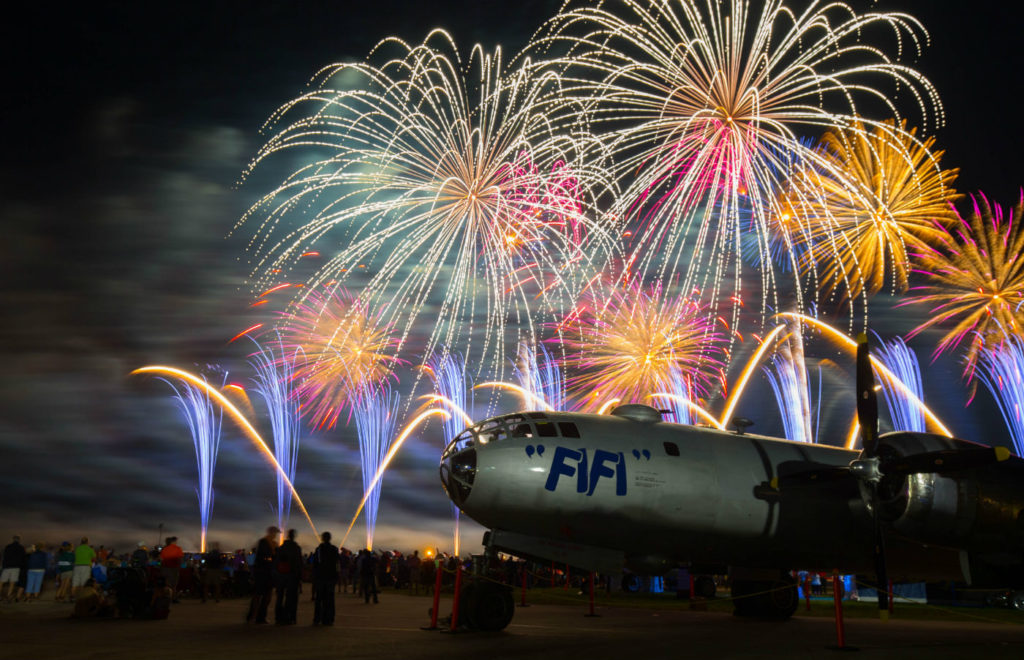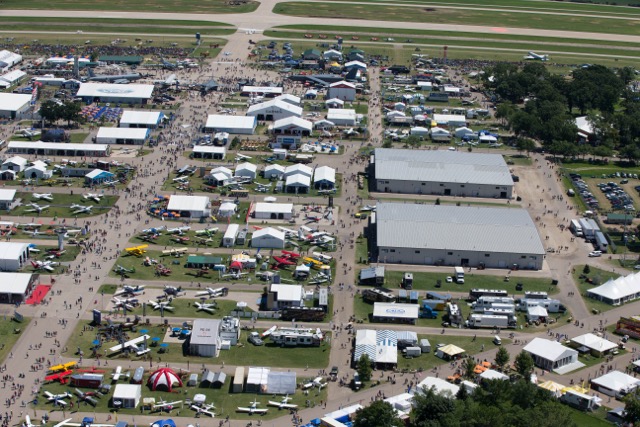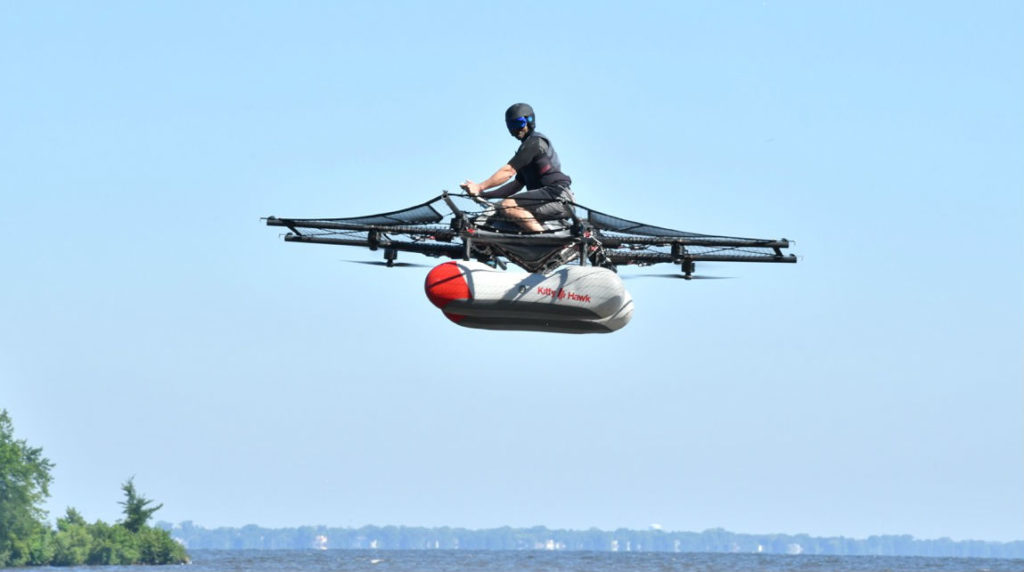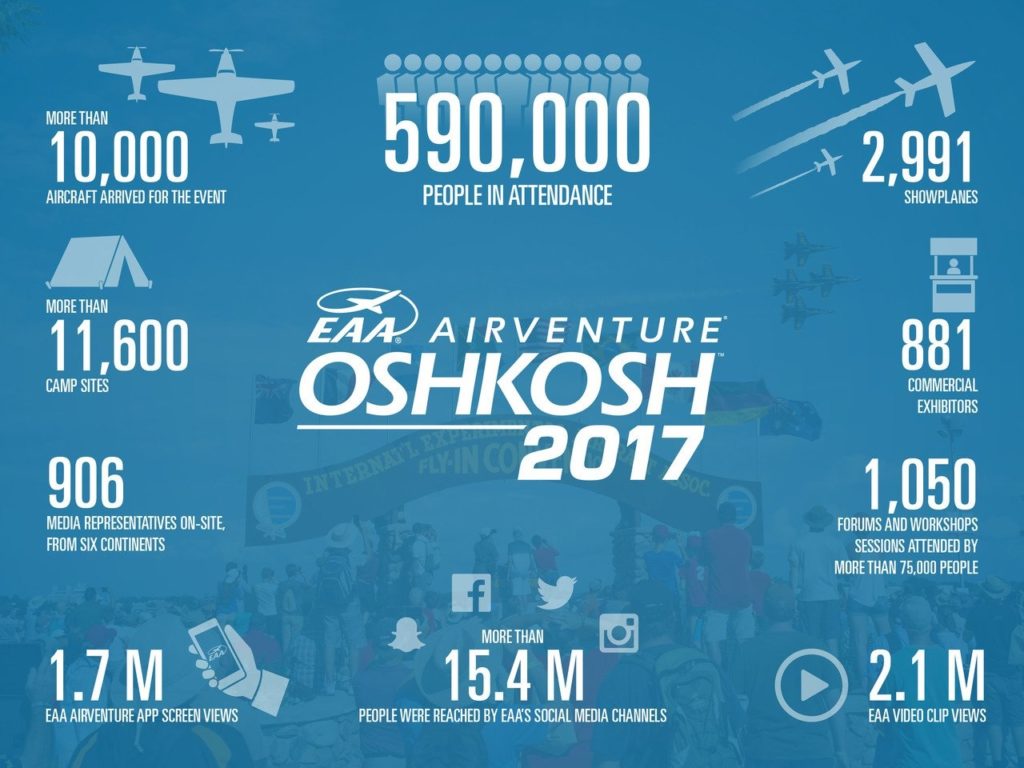Estimated reading time 8 minutes, 12 seconds.
This year, one of the star Canadian attractions at EAA AirVenture Oshkosh was on the stage rather than in the sky.

The Canadian rock band Barenaked Ladies played the opening night of the seven-day aviation extravaganza on the Ford Motor Company stage. They performed before thousands of music fans on Boeing Plaza, where dozens of aircraft were displayed including Amazon.com founder Jeff Bezos’ historic Blue Origin New Shepard reusable rocket, a newly restored Boeing B-29 and U.S. Air Force Boeing B-52 and B-1B Lancer bombers.
Ed Robertson, guitarist and lead singer of the band, got his pilot’s licence in 2005 and served as an Honorary Colonel of the RCAF’s 424 Transport and Rescue Squadron for three years. This was Robertson’s first time at Oshkosh.

AirVenture, held July 24 to 30, celebrates aviation across a wide spectrum. This year’s show was no exception. An estimated 590,000 people attended the week-long show and more than 15,500 aircraft movements were recorded through Saturday, which breaks the record set last year and made Wittman Regional Airport the busiest airport in the world that week.

The number of showplanes was up five per cent in 2017 when compared to last year, and both parking and fly-in camping spots filled up quickly and stayed at capacity for five days, something that has never happened at Oshkosh before.
Spread across the more than 650 rows of aircraft parking were hundreds of Canadian-registered homebuilts, antique aircraft, ultralights, warbirds, helicopters and general aviation aircraft from almost every province.

This year’s show featured the largest gathering of Apollo astronauts at Oshkosh since 1994, a guest appearance by Marvel comic book legend Stan Lee, a flypast of B-25s to commemorate the 75th anniversary of the Doolittle Raid, a strategic bomber display, an all-female UPS Boeing 767 flight, and literally thousands of workshops and social gatherings.
AirVenture is exceptionally well organized, thanks to the contributions of more than 5,000 volunteers. A total of 2,991 show planes were fully accessible to the public as large formations of warbirds roared overhead and the expansive exhibition area had minimal fencing and no litter, which is remarkable for a public gathering of this size.
Canadian companies with a strong presence at AirVenture included Pratt & Whitney Canada (celebrating 100,000 engine deliveries), BRP-Rotax (displaying the new Rotax 915 iS aircraft engine), Viking Air (showcasing a Twin Otter Series 400 aircraft on Wipaire amphibious floats), as well as long-term regulars Zenair and Diamond Aircraft.
Three different branches of the U.S. federal government displayed hard-working de Havilland Canada aircraft, including the U.S. Forest Service (DHC-2 Beaver use for firefighting from Ely, Minn.), the National Oceanographic and Atmospheric Administration (DHC-6 Twin Otter used for remote sensing from Lakeland, Fla.), and the U.S. Navy Test Pilot School (DHC-3 Otter used to train test pilots at NAS Patuxent River).
Boeing released its 2017 Pilot and Technician Outlook at EAA AirVenture Oshkosh, projecting a demand for more than 1.2 million pilots and technicians between now and 2036, including 637,000 new commercial airline pilots; 648,000 new commercial airline maintenance technicians; and 839,000 new cabin crew members.

The 2017 outlook shows a slight increase of 3.2 per cent for pilots over the 2016 projection, and a slight decrease in the need for aircraft maintenance technicians (4.6 per cent), primarily driven by the reduction in maintenance hours required on new generation aircraft.
North America will require 117,000 new pilots, 118,000 new maintenance technicians, and 154,000 cabin crew over the next 20 years, according to Boeing.
Rising regional airline demand in the U.S. resulted in strong regional airline participation at the EAA Career Fair, with one carrier offering new pilots a total compensation package for the first three years totaling US$220,000.
Prior to AirVenture, the CAFE Foundation hosted a two-day electric aircraft symposium highlighting how distributed electric propulsion (DEP) and more powerful batteries will make aviation greener and more affordable.

Pipistrel, a Slovenian light aircraft manufacturer, is now delivering the two-seat Alpha Electro electric-powered light sport aircraft trainer to flight schools. Kitty Hawk, funded by Google co-founder Larry Page, flew its proof of concept Flyer for the first time outside the San Francisco area at the EAA Seaplane Base. Kitty Hawk plans to begin selling a more advanced version of the electric vertical takeoff and landing (eVTOL) ultralight aircraft in late 2017.
The Kitty Hawk Flyer design team is led by Canadians Todd Reichert and Cameron Robertson, whose AeroVelo Atlas Human-Powered Helicopter team won the $250,000 AHS International Igor Sikorsky prize in 2013.
Last year, Reichert powered AeroVelo’s aerodynamic bicycle, Eta, to a new human-powered land speed record of 89.59 mph (144.18 km/hr). On its own, Eta is the fastest bicycle in the world.










No doubt at all, this is the real deal and highly probably the big one on the planet.